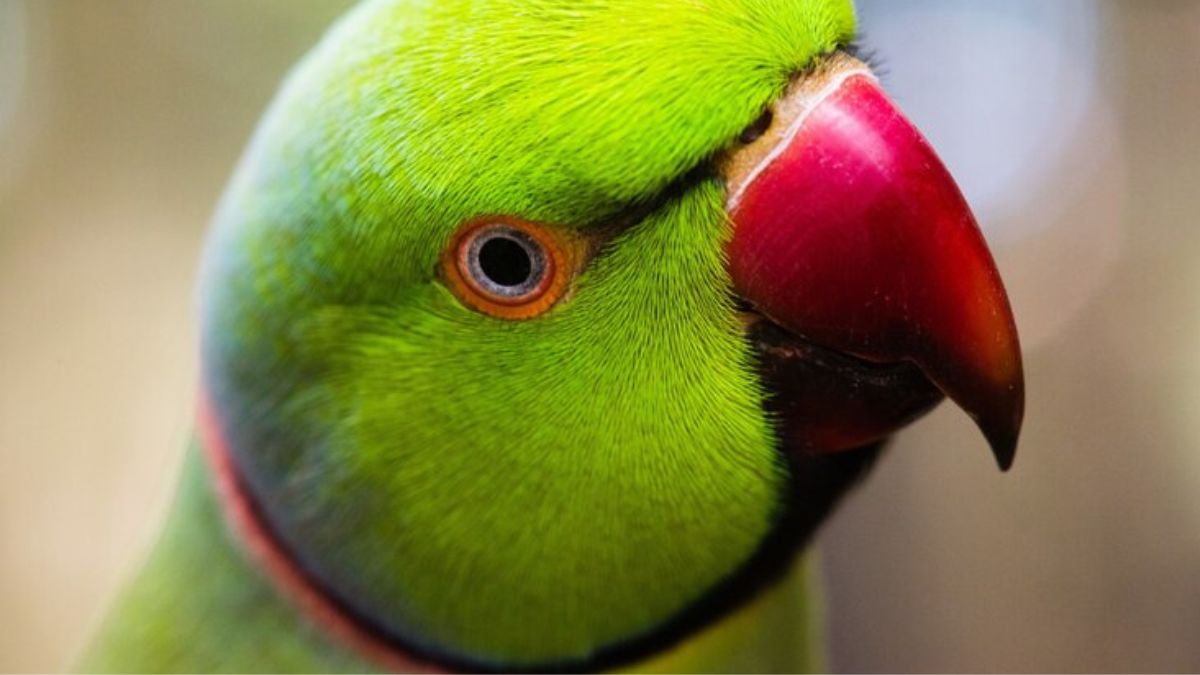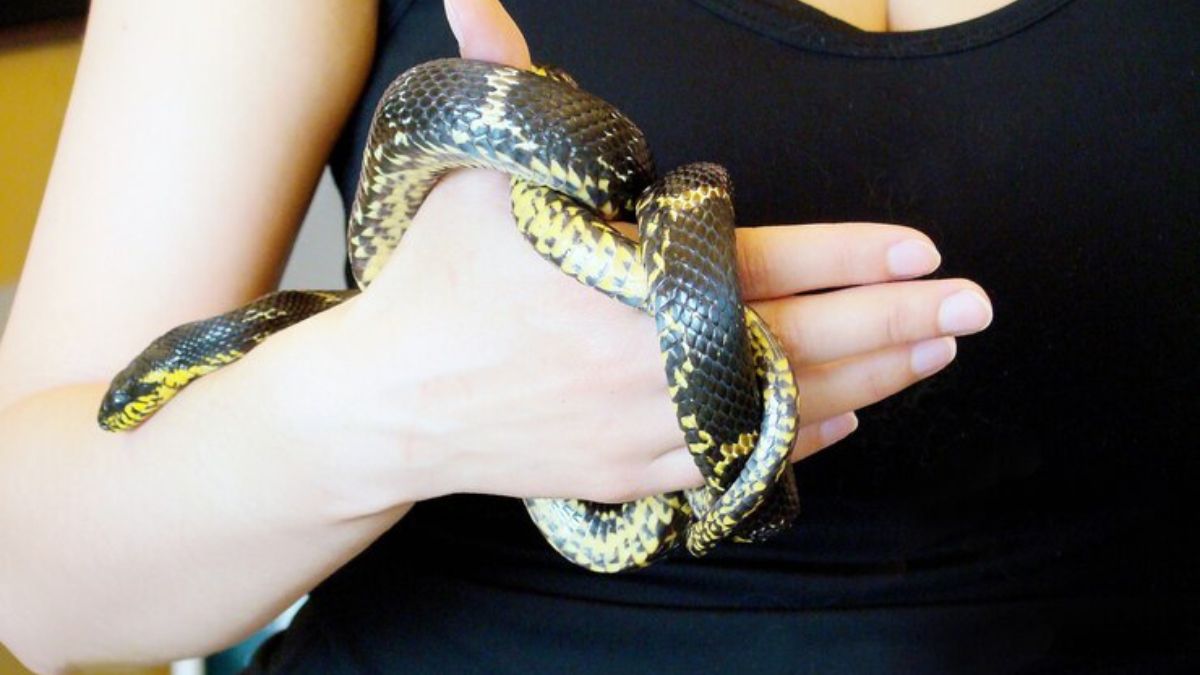PETS
Ringneck Parrot for Sale: A Comprehensive Guide to Welcoming a Feathered Friend

The vivacious colors and charming personality of ringneck parrot for sale have contributed to their meteoric rise in popularity as household pets. First, let’s go over the fundamentals before we go into buying one.
Types of Ringneck Parrots
Different Color Mutations
There is a wide range of color variations in this parrot species, and each one has its own special allure. Knowing the many varieties, which range from vivid blues to startling yellows, is essential when choosing the right mate.
Distinctive Characteristics of Each Type
Not only do different varieties of Ringneck Parrots have different colors, but they also have different personalities. Some may be more outgoing than others, while yet others may have a reputation for being rather mischievous.
Considerations Before Buying
Space Requirements
In order to flourish, ringneck parrots require a lot of room. The necessity of giving your pet plenty of room to roam and interesting things to do will be covered, along with the optimal cage size.
Time Commitment
A lifetime of dedication is required to be a parrot owner. We’ll go over all the things you need to do to make sure your feathery companion is healthy and happy.
Financial Aspects
Caring for a Ringneck Parrot incurs expenses beyond the original investment. We’ll help you figure out how much money you’ll need to buy their food, toys, and any possible vet visits.
Finding Reputable Sellers
Online Platforms
There is an abundance of resources online where you may purchase Ringneck Parrots. Here we’ll go over some of the pros and cons of doing business with internet vendors.
Local Breeders
You may meet the parrot in person by contacting local breeders. Here, we’ll show you the ropes when it comes to finding trustworthy breeders and the right questions to ask.
Pet Stores
Not all pet stores are the same, no matter how convenient they appear. What to look for and how to choose a reliable pet store are topics we’ll cover.
Health and Age Factors
Importance of Health Checks
It is critical to check the parrot’s health before buying it. The most important health checks, either you do yourself or ask the vendor to do, are outlined below.
Ideal Age for Adoption
It is essential to know the benefits and drawbacks of different age groups of parrots, whether you are looking for a young one or thinking about adopting an older one.
Socialization and Training
Importance of Social Interaction
To a ringneck parrot, socialization is life. We’ll go over the benefits to your parrot’s health of spending quality time with them.
Basic Training Tips
Teaching your parrot new tricks may be fun for you and your pet. To help you get to know each other and start a conversation, we’ll go over some ground rules.
Setting Up the Perfect Home
Cage Specifications
The well-being of your parrot depends on your careful selection of a cage. Size, materials, and accessories are all things we’ll help you figure out.
Toys and Accessories
To make your parrot’s habitat more interesting, you must provide it with toys and other items. To keep them engaged physically and intellectually, we will suggest appropriate things.
Nutritional Needs
Balanced Diet Essentials
A parrot’s health is directly related to its diet. Here we will go over the fundamentals of a healthy diet and some suggestions on what to eat.
Common Food Items to Avoid
Ringneck parrots are susceptible to food poisoning. We’ll go over everything your parrot shouldn’t eat and why they’re bad for it.
Grooming and Hygiene
Feather Care
The general well-being of your parrot depends on its plumage. Grooming procedures and typical problems with feathers will be covered.
Bathing Routines
A ringneck parrot’s favorite pastime is a dip in the water. We’ll go over some strategies for incorporating bathing into their schedule and how often it’s best for them.
Understanding Ringneck Behavior
Vocalizations
Vocalizations are a defining characteristic of ringneck parrots. We will delve into the significance of their noises and decipher their language.
Signs of Distress or Happiness
You must master the art of reading your parrot’s nonverbal cues. Whether they are happy or sad, we will show you the signals and how to react.
Building a Bond
Spending Quality Time
Establishing a solid connection demands dedication and patience. We’ll give you some suggestions for things to do that will help you bond with your feathery pal.
Games and Activities
Taking part in activities and games with your parrot can have dual purposes: amusing it and teaching it new things. We will propose engaging activities to maintain their interest.
Common Challenges and Solutions
Behavioral Issues
When you own a parrot, you have to deal with its behavioral issues. We’ll talk about the things that annoy each other and how to fix them so that our relationship stays nice.
Health Concerns
Being alert to possible health issues enables prompt action. To make sure your parrot stays healthy, we’ll go over some of the most prevalent problems and how to avoid them.
Legal Considerations
Necessary Permits
Permits may be necessary to keep Ringneck Parrot for sale in your home. Regarding the legal side of things, we will tell you how to get the appropriate permits.
Local Regulations
Comprehending and respecting local ordinances is crucial. In order to ensure rightful ownership, we will assist you in navigating the necessary legal formalities.
Testimonials and Reviews
Positive Experiences
Practical advice from those who have owned parrots before can be quite helpful. We will disseminate laudatory comments and helpful hints from other Ringneck fans.
Lessons Learned from Other Owners
One way to stay away from typical problems is to study up on what other people have gone through. We’ll be featuring advice and insights from people who have owned parrots for a long time.
Conclusion
Finally, welcoming a Ringneck Parrot for sale into your house is an amazing adventure full of happiness and camaraderie. If you follow our advice and think about the things we’ve said, you should have no trouble developing a strong bond with your new feathery companion.
FAQs:
Q: How long do Ringneck Parrots live?
With the right kind of care, a ringneck parrot may survive for twenty-five years or longer.
Q: Do Ringneck Parrots require a lot of attention?
Absolutely! Ringneck Parrot for sale are gregarious creatures who want constant attention from their owners.
Q: Can Ringneck Parrots talk?
It’s true that ringneck parrots may learn to mimic human speech and pronounce a wide variety of words and phrases.
Q: What should I do if my parrot shows signs of distress?
It is crucial to get quick veterinary advice in the event that you observe any indications of suffering.
Q: Are Ringneck Parrots suitable for first-time bird owners?
Ringneck Parrots aren’t necessarily difficult to care for, but first-time bird owners should definitely do their research.
PETS
Cat Hat Wearable Cat Tree: Enhancing Feline Comfort and Mobility

It can be difficult to provide cats with enough of climbing and exploring options, particularly for cat owners residing in limited places, because cats are notoriously playful and energetic. An ingenious cat hat wearable cat tree has emerged as the answer. With this one-of-a-kind creation, felines and their humans alike may enjoy all the advantages of a classic cat tree combined with the portability of wearable tech.
Benefits of a Cat Hat Wearable Cat Tree
The ease it provides is one of the main benefits of a wearable cat tree for cats. Cats may still enjoy climbing and perching on a wearable tree without taking up precious floor space, unlike with traditional cat trees. In addition to making better use of available space, this helps cats and their human friends form a closer relationship.
A cat cap that doubles as a cat tree encourages more movement and discovery for felines. They get the cerebral stimulation they require while engaging in their normal activities when given the opportunity to climb and perch at different heights. This can be particularly helpful for cats living indoors, since it can reduce tension and boredom.
Features to Look for in a Cat Hat Wearable Cat Tree
You should think about a few key elements while selecting a wearable cat tree for your feline friend. Picking a product with a solid build is the first step in making sure your cat is safe and secure. textiles that are both soft and sturdy, such breathable mesh and cozy textiles, are what you should be on the lookout for.
Because cats come in many forms and sizes, it’s crucial that their clothing be adjustable. It should be possible to tie the tree firmly without making it uncomfortable or limiting your movement. At last, think about if there are any supplementary safety measures, including materials that reflect light for use at night or integrated harnesses to avoid falls.
How to Choose the Right Cat Hat Wearable Cat Tree
Careful deliberation is required while choosing an appropriate wearable cat tree for your beloved feline companion. The best way to choose the right size and style for your cat is to take stock of its stature and habits first. A shorter, cozier form may be more appealing to a shy cat, while a taller, more energetic cat may necessitate a more robust tree with several tiers.
Look at how long the product lasts and how well it is made. Invest in a high-quality item that can last regular usage by reading reviews from other cat owners and seeking suggestions from reputable sources.
Setting Up and Using a Cat Hat Wearable Cat Tree
It is time to install and introduce your feline friend to your new wearable cat tree once you have selected the ideal one. Carefully follow the manufacturer’s directions to fix the tree and adjust it so it fits your cat.
Maintenance and Care
A regular maintenance schedule is crucial for the optimal health of your cat cap wearable cat tree. You might have to give the tree an occasional spot cleaning or give it a good hand wash to get rid of grime, hair, and smells, depending on the materials used. Trees also need frequent inspection for damage, such as unraveled threads or frayed seams, which should be addressed promptly.
Creative Ways to Use a Cat Hat Wearable Cat Tree
Even while a cat hat wearable cat tree mainly serves to provide cats somewhere to climb and perch, there are a ton of cool things you can do with it every day. Maybe your cat will like using it as a comfy bed to curl up in whether you’re at the office or just relaxing at home. The addition of goodies or toys hung from the tree can further inspire discovery and play.
More daring cat owners can choose from a plethora of do-it-yourself customizing possibilities. Create a one-of-a-kind wearable tree for your feline friend by getting crafty with fabric paints, patches, or appliqués.
Safety Precautions
Make sure your cat is always secure before playing with wearable cat trees, even if they may entertain and enrich them for hours. While your cat is acclimating to the tree, keep a careful eye on how it acts while wearing it. Get your cat out of the tree and to the doctor right away if it displays any symptoms of pain or distress.
Before you let your cat climb the tree, double-check that it’s correctly attached and adjusted to their size. Leaving your feline friend unsupervised while wearing a tree is very unacceptable, particularly in places they are unfamiliar with or outdoors.
Customer Reviews and Testimonials
Many happy cat owners have attested to the efficacy and portability of cat cap wearable cat trees. Many report an instant improvement in their cat’s disposition, energy levels, and lack of boredom. The innovative products’ space-saving design and long-lasting sturdiness are additional customer favorites.
Conclusion
Ultimately, for cat owners who value space and convenience but still want to provide their feline friends climbing and exploring options, a wearable cat tree is a great alternative. Many different styles and functions are available, so you may pick the perfect wearable cat tree for your feline friend.
FAQs:
What is a cat hat wearable cat tree?
The clever wearable cat tree combines the best features of a conventional cat tree with the portability of a hat, so felines may play fetch and sit without leaving their owners’ side.
How does it differ from traditional cat trees?
Instead of taking up precious floor space, a wearable cat tree allows the cat to explore more freely and enjoys the benefits of increased mobility.
Are cat hat wearable cat trees suitable for all cat breeds?
Although there is a wide range of sizes available for wearable cat trees, it is still crucial to select a product that suits your feline friend’s size and habits.
Can I leave my cat unattended while wearing a cat hat wearable cat tree?
Be cautious not to leave your feline friend unattended when they’re wearing a cat hat wearable cat tree, particularly in places they’ve never been before or in the dark. For the sake of your cat’s well-being, you should always keep a careful eye on its actions.
Are cat hat wearable cat trees machine washable?
The washability of cat hat wearable cat trees is dictated by the materials that are used to make them. The manufacturer’s instructions will include the specific care and maintenance that is needed.
How to
How to Handle Yumi Sin and Fit Kitty: A Guide to Pet Snake Care

Introducing Fit Kitty and Yumi Sin, two fascinating feline friends that will add a touch of mystery and allure to your life as a pet owner. To properly care for these snakes as pets, one must be knowledgeable of their habits, provide them with an optimal environment, and use gentle handling techniques. If you want to have a peaceful relationship with your slithery snake companions, this book will teach you how to properly care for them. Come and learn about snakes with us as we delve into the fascinating world of snake handling, sharing stories of snake delight, feeding patterns, health concerns, and unique personalities. In this enthralling guide, you will learn all about How to Handle Yumi Sin and Fit Kitty, as well as the pleasures and sorrows of being a snake owner.
Understanding Snake Behavior
Instincts have a significant role in shaping snake behavior. Because of their individuality, Yumi Sin and Fit Kitty have characteristics that need for particular care. In order to coexist peacefully with your snake pets, it is essential that you comprehend their habits.
Creating a Comfortable Habitat
To properly care for snakes, it is essential to provide an atmosphere that is as close as possible to their native habitat. Yumi Sin and Fit Kitty can only thrive in an environment with the ideal humidity, temperature, and hiding places.
Feeding Guidelines
The well-being of your pet snakes depends on your careful attention to their nutrition. This article will discuss the unique nutritional requirements of Yumi Sin and Fit Kitty, including how often they should be fed and how much they should eat each day.
Handling Techniques
A calm demeanor and light touch are necessary while dealing with snakes as pets. To provide a pleasant handling experience for you and your serpentine friends, Yumi Sin and Fit Kitty, we will offer advice on how to establish confidence with them.
Health and Wellness
Happy snakes are healthy snakes. Acquire the ability to identify the early warning signals of illness and wellness. We’ll go over some preventative steps that you can take to ensure that Fit Kitty and Yumi Sin stay healthy.
Enrichment Activities
Even though snakes have a bad connotation, they really thrive when challenged physically and mentally. Find out what kinds of enrichment activities Yumi Sin and Fit Kitty may participate in to keep themselves occupied and happy.
Socialization
The social growth of snakes as pets depends on your exposing them to new places and helping them form good relationships with people and other animals.
Grooming and Shedding
Snake owners must have a thorough understanding of the shedding process. Here are some pointers to help Yumi Sin and Fit Kitty through this normal, though not always easy, stage of their lives.
Common Misconceptions
In order to help you become a responsible pet owner, we will debunk several myths and misconceptions regarding snake care and address them.
Yumi Sin and Fit Kitty Stories
Yumi Sin and Fit Kitty’s distinct characteristics can be better understood from first-hand tales from snake owners. Based on personal experiences, these stories provide useful advice.
Snake-Proofing Your Home
To ensure Yumi Sin and Fit Kitty’s safety, it is vital to take precautions to safeguard your living space and prevent any possible escapes.
Emergency Preparedness
It is critical to be ready for situations with snakes. We’ll go over the steps of making an emergency plan and stress the significance of being familiar with the vets in your area.
Community Resources
Join online groups where others share your passion for snakes. Join Yumi Sin and Fit Kitty on a journey together by sharing stories, getting guidance, and creating a support system.
Conclusion
Finally, it takes an equal amount of expertise, persistence, and devotion to care for snakes as pets, such as How to Handle Yumi Sin and Fit Kitty. If you follow these rules, your relationship with your one-of-a-kind serpentine friends will be rich and rewarding.
FAQs:
How often should I feed Yumi Sin and Fit Kitty?
Snakes’ feeding schedules are species and age dependent. For specific recommendations, see a vet who specializes in caring for reptiles.
Can Yumi Sin and Fit Kitty be trained?
Snakes may not be as receptive to teaching as dogs, but they may still acquire familiar faces and habits.
What do I do if Yumi Sin or Fit Kitty refuses to eat?
Appetite loss is common but should not be taken lightly if it persists for an extended period of time. Seek advice from a veterinarian.
Is it safe to let Yumi Sin and Fit Kitty roam freely in the house?
Although supervised exploration has many advantages, it is important to make sure the area is safe to avoid escapes.
How do I find a reliable vet for Yumi Sin and Fit Kitty?
To locate a qualified reptile vet, ask around in reptile groups or check internet directories for referrals.
PETS
Fostering Canine Fitness: Understanding and Implementing Ideal Exercise Routines for Dogs

Key Takeaways:
- Daily exercise is essential for your Canine overall health and happiness.
- Exercise needs vary by breed, age, and health status; tailor the activity accordingly.
- Be vigilant for signs of over-exertion, and know your dog’s limits.
- Incorporate various activities to keep exercise fun and engaging for your dog.
The Importance of Regular Exercise for Dogs
Every dog owner knows that a pup full of vim and vigor is a joy to witness. This vivacity isn’t just a sign of a joyful pet; it’s also a marker of a healthy one. A regular exercise routine isn’t just beneficial; it’s imperative for a dog’s physical and mental well-being. It aids in weight management and helps prevent many health issues, such as joint problems and heart disease. More so, a well-exercised dog is often a well-behaved dog. Consistent physical activity can significantly reduce undesirable behavior like excessive barking, chewing, or digging by providing an outlet for pent-up energy.
While the immediate benefits are evident, the long-term impacts are just as crucial. For senior dogs, physical activity is synonymous with mobility. It keeps muscles toned and joints lubricated, which is instrumental in maintaining their flexibility and movement as they age. Furthermore, exercise can be a powerful ally in the fight against cognitive decline.
Maintaining a rhythm in your dog’s exercise routine encourages their natural circadian rhythms, leading to better sleep patterns and a more settled disposition. This is where knowing how often should you walk a dog becomes essential. Regular walks are the bedrock of a robust exercise regimen, offering sensory stimulation as crucial as physical exertion. Striving for a balance in rest and activity is vital. According to ScienceDaily, studies have shown that exercise positively impacts cognitive function, particularly in older dogs, leading to a higher quality of life even in their twilight years.
Tailoring Exercises to Different Breeds
Dog breeds and their requirements for physical activity are incredibly diverse. High-energy breeds like Australian Shepherds or Dalmatians demand more exercise to relieve boredom and maintain physical fitness. These dogs thrive on challenging activities and may become restless without adequate stimulation. Conversely, breeds like Shih Tzus and Great Danes enjoy a more leisurely lifestyle. While they still need regular activity, their exercise can be less vigorous and more focused on moderate walks or play sessions.
Understanding their breed’s instincts and abilities is the key to formulating the perfect exercise plan for your dog. For example, herding breeds may excel and find fulfillment in agility training, while scent hounds could be more engaged in tracking exercises. Identifying activities that align with their natural tendencies ensures they get the necessary physical workout and provides mental enrichment.
Age and Health Considerations in Canine Exercise
A dog’s age is essential when determining the appropriate level and type of exercise. Vigorous play sessions and long, meandering walks might be perfect for a spry young adult, but they can be too taxing for puppies or elderly dogs. For growing puppies, the priority should be safe, controlled play that doesn’t overtax growing bones and joints. A puppy’s joints are still developing, and too much strain can lead to long-term health consequences. On the other hand, senior dogs benefit from a more gentle approach to exercise. Activities that maintain muscle strength and joint health, such as slow-paced walks or swimming, are beneficial, and they also serve to keep the mind active and engaged. Recognizing that every stage of life presents unique challenges and opportunities for exercise will help ensure your dog remains happy and healthy throughout their entire life.
Types of Exercise: From Leash Walks to Agility Training
When we think of exercising a dog, the mind immediately walks. While essential, this is just one aspect of a full and varied exercise regime. Dogs benefit greatly from engaging in various activities that cater to their health and happiness. An agility course, for instance, provides physical challenges while boosting confidence and obedience. Fetch is a classic that works on their speed and reflexes and provides a good cardiovascular workout. You can set up mini-obstacle courses at home or play hide-and-seek to keep your dog fit and mentally sharp. Swimming is another fantastic way for dogs to exercise as it’s low-impact yet highly effective at building muscle and stamina without straining joints.
For dogs who crave social interaction, dog parks allow them to mingle and play with others, helping to improve their social skills while getting a great workout. For the more disciplined, activities like canicross — running cross-country with your dog — can provide an excellent outlet for energy and an opportunity to strengthen the bond between pet and owner. The bottom line is that the best exercise routine for your dog will include various activities that address both physical fitness and mental stimulation.
Understanding Your Dog’s Exercise Limitations
Just as exercising your dog is imperative, it’s equally important not to overdo it. Dogs often don’t know their limits and can push themselves too hard, leading to injuries or heat exhaustion, especially in warmer climates. Understanding and recognizing the signs of fatigue in your dog is crucial. Symptoms of over-exertion, as defined by the American Kennel Club, include excessive panting, disorientation, and even collapse. If your dog shows any of these signs, stop the activity immediately and give them a chance to rest and hydrate. Also, be aware of your dog’s body language and willingness to engage in activity. A tail wag and excited demeanor indicate they are eager and ready for physical fun, while a disinterested or sullen attitude might signal that they’ve had enough.
Remember, too, that age, breed, and individual health can all affect a dog’s ability to cope with exercise. Young puppies, for instance, shouldn’t go on lengthy hikes because their growing bodies aren’t equipped to handle the prolonged strain. Meanwhile, senior dogs or those with health conditions such as hip dysplasia or obesity may require shorter, more frequent periods of less strenuous activity.
Seasonal and Weather-Related Exercise Adjustments
Adapting to seasonal changes is crucial when caring for your pet. During the dog days of summer, taking precautions against heatstroke is essential, including providing plenty of water during exercise, seeking shade, or opting for swims instead of walks. In winter, cold weather can increase the risk of frostbite and hypothermia. So, shorter sessions with protective gear like sweaters and boots might be necessary, especially for breeds with thin coats. These extra steps ensure your dog can stay active and safe, regardless of the weather outside.
The Role of Diet in Conjunction with Exercise
A balanced diet provides the foundation for a healthy exercise routine. Ensuring your canine has access to appropriate nutrients fuels their body for better performance and recovery post-exercise. Dogs engaging in regular, strenuous exercise might require food that is higher in calories and protein to meet their increased energy demands, similar to how an athlete’s diet differs from that of an average person. Conversely, dogs with a more sedentary lifestyle need a diet that won’t contribute to unwanted weight gain. Monitoring your dog’s weight and consulting with your veterinarian can help you fine-tune their diet to their activity levels.
Setting and Achieving Exercise Goals with Your Dog
Goals are not just a human concept; they can also benefit dogs. When setting exercise goals for your canine, consider their breed, age, fitness level, and health conditions. Start with small, attainable goals and gradually increase the challenge as your canine builds endurance and strength. That might mean beginning with three short walks daily and working up to longer hikes or jogs. Keeping a record of your dog’s activities can be satisfying and help you and your vet make informed decisions about their health and fitness plan.
Getting the Most out of Playtime and Exercise Sessions
Exercising your dog doesn’t have to be a mundane task. You can make it enjoyable for both of you by introducing fun and variety into the sessions. Experiment with different toys and games to determine what your dog enjoys the most. Some might love a vigorous game of tug-of-war, which can also be a bonding exercise, while others might prefer the cognitive challenge of a puzzle feeder. Incorporating training exercises into playtime enhances obedience and behavior and makes your dog more attuned to commands and cues during exercise. Ensuring these fun sessions will make your dog look forward to them rather than seeing them as a chore.
Advanced Canine Sports and Training for the Ambitious Dog
Various advanced sports can provide the perfect outlet for canine companions who love being on the go. These include activities like flyball, agility courses, or rally obedience, all promoting physical fitness while strengthening the bond between a canine and their owner. Training for these sports can be immensely enjoyable and equally rewarding, and they offer an excellent opportunity for dogs to engage with others and showcase their talents.
-

 HEALTH1 month ago
HEALTH1 month agoSmile Wide: The New Dentist’s Guide to Launching a Successful Career
-

 TECHNOLOGY1 month ago
TECHNOLOGY1 month ago몽세리 266b+v: Unraveling the Mystery Behind It
-

 GENERAL1 month ago
GENERAL1 month agoTop Fertilizer Suppliers Malaysia: Boosting Agriculture with Quality Nutrients
-

 GENERAL1 month ago
GENERAL1 month agoHelping Hands:The Role of Employee Assistance Programs
-

 NEWS1 month ago
NEWS1 month agoLakewood News Network: Keeping You Connected Locally
-

 BUSINESS1 month ago
BUSINESS1 month agoFine-Tuning Success: Tips for Optimizing Your Advertising Agency
-

 GENERAL1 month ago
GENERAL1 month agoThe Unspoken Reality: Breaking the Silence on Unwanted Pregnancy
-

 BUSINESS1 month ago
BUSINESS1 month ago10 Business AI Tools by abc-media.net: Revolutionizing Your Workflow

